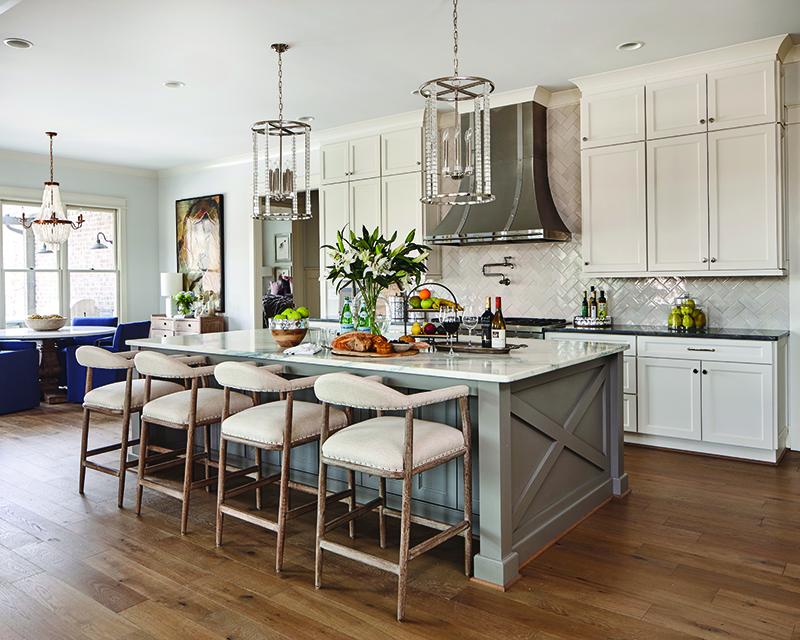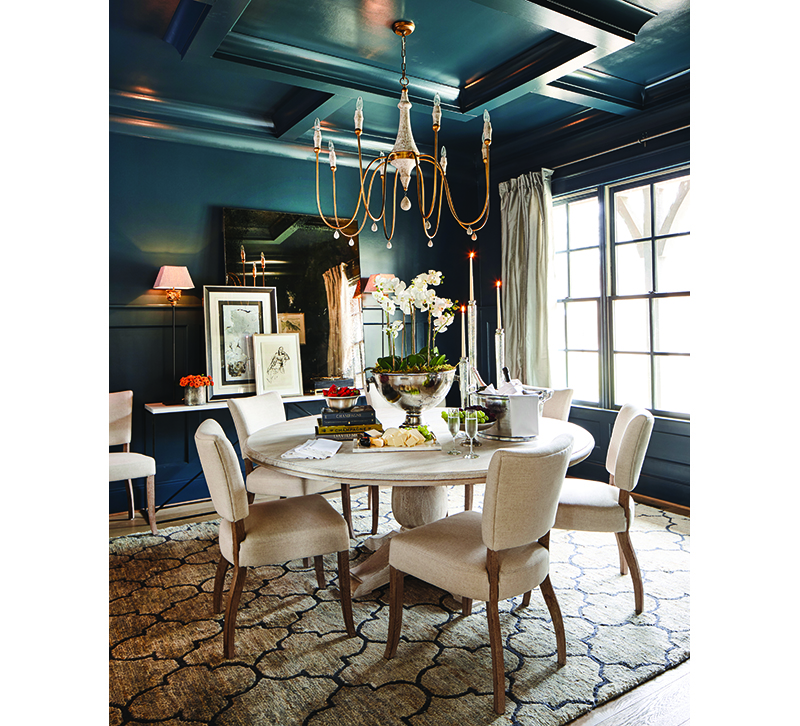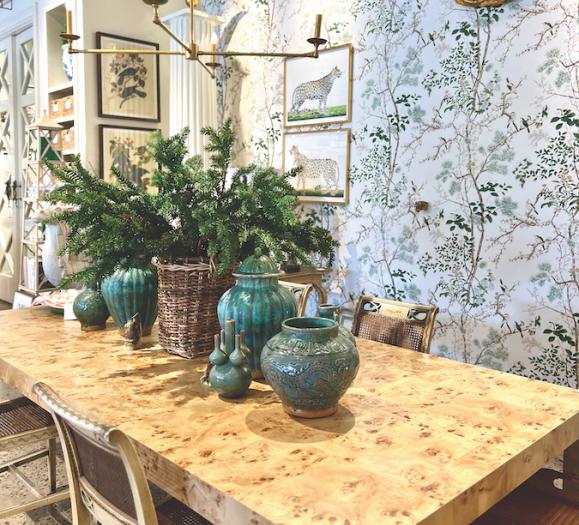In a year when filling warehouses has become job-one for furniture retailers, Stock & Trade Design Co. has been finding innovative ways to delight its customers by actually delivering the products they see, even if that at times has meant loaning a dining room table off a store floor for a holiday celebration. The temporary hole left behind might be quickly filled with another dining set, or morph into a sofa vignette, but Chief Executive Michael Carey has from the beginning held fast to the idea of actually taking his customers’ satisfaction personally. And to continually changing up his floors.
Getting To Great
Currently there are five Stock & Trade locations, with storefronts in Birmingham, AL; Atlanta, GA; Destin, FL; Nashville, TN; and Spanish Fort, AL. A 70,000-square-foot showroom that will include the company’s corporate offices is set to open next spring in Santa Rosa Beach, FL.
Understanding the successful model here requires a little backtracking however, returning to Carey’s first retail experiences in Pelham, AL, right around the time the Recession hit in 2008. Looking back, few would have predicted he would one day lead one of the hottest, fastest-growing design focused home furnishing chains in the Southeast.
To begin with, Carey was fully committed to his job in law enforcement, a full-time career in policing that began in 1996, and from which he only officially retired last year. He built and renovated properties on the side, some of which were vacation rentals that he would furnish — swapping out pieces and buying fresh ones at a consignment store. Eventually, a friend who managed a furniture store took him along on a trip to the Tupelo Market in the late ‘90s, which he recounts as an exciting, eye-opening experience, but not much more due to the tight real estate market at the time. Even so, a seed was planted in his brain, and a retail concept that would combine the consignment model with new furniture began to formulate in the back of his mind, but “there were just no buildings to be had back then.”
When the economy eventually tanked, Carey noted that one of the first things that people canceled were gym memberships. “I knew of a fitness center in Pelham that still had five years on their lease that they wanted to get out of,” he remembers. Ironically, on the eve of that club’s opening years before, the owners had contacted the police department and said they couldn’t afford to hire anyone for traffic control. “They asked if anyone would be interested in working the grand opening in exchange for a gym membership.” Carey, of course, was the one who stood out in the hot summer sun directing traffic that day to obtain one.
Twenty years later, he owns that building, which houses Encore Resales, his first foray into retail and to this day a thriving concern with a compelling mix of new and consignment furniture. While it was voted Best of Birmingham a few years back, Carey relates that it was by no means an overnight success. “I started out with 12,000 square feet of consignment furniture when I assumed the lease. Auctions were really popular then, and I was buying a lot of vintage. I would get off work, jump in my truck and be at the auction until midnight loading up purchases with one other guy, who by the way still works for me all these years later. We would fix them up and paint them white or black with some distressing here and there, because everything had to be painted back then with chalk paint. We went through gallons of the stuff.”
Since there was no loading dock on the building, much less space for back-stock, Carey laid his hands on every single piece of furniture that came in, obviously because he had to unload them. “There were times when I’d load up the truck at night after the auction, boogie back to Birmingham, get in the police car and go to work for eight hours, then be back at the store the next morning unloading the truck.”
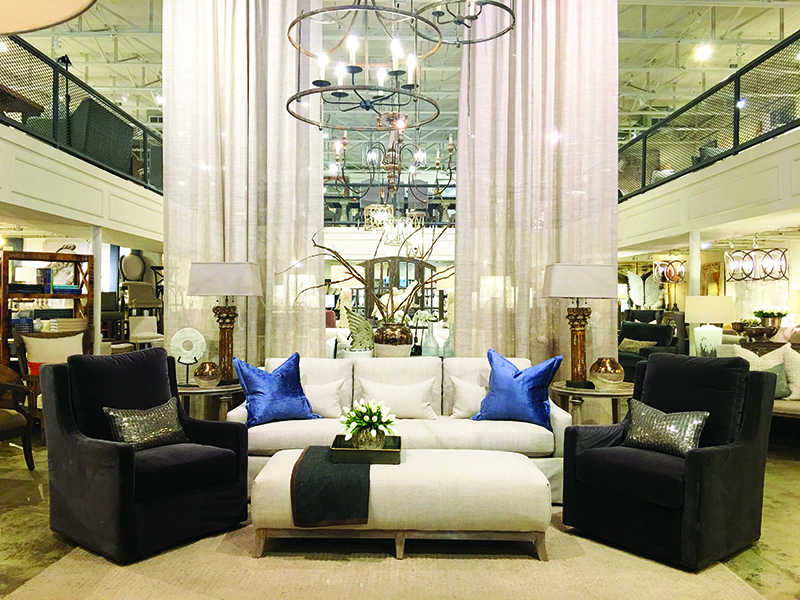
Business Plans Aren't Everything
At this juncture, it’s worth noting that in that same first year of the Recession, four furniture stores in Birmingham, some in business for decades, were shutting down. By his own admission, the young policeman “didn’t have any money,” had no background or understanding of how things typically worked in the retail furniture arena and had no formal business plan. He also had zero background in buying antiques. “I liked looking at furniture; I liked buying furniture, but I had no history in it.” What he did have an innate grasp for, however, was the secret to flowing goods — “It was not a huge investment in any one thing,” — and a true understanding of what his customers were after, not what other people told him would sell. “It was very one-on-one and personal,” he says with some understatement. “If you buy right, and you don’t have any waste, you keep a good flow. The stuff came off the truck and would immediately sell, so I was hearing firsthand what customers thought. And we were getting great response from the community. I think the first month we sold $30,000, and sales just kept going up and up.
Carey was at the store every day, working seven days a week, steadily upgrading the space he was leasing, making capital improvements by doing everything from stripping the floors to painting to cleaning the toilets. As an investigator he would get called out to work cases in the middle of the night and on weekends, and if the pace sounds daunting, know that later he moved out of investigations into working evenings, and eventually night shifts. “I was able to be at the store for six or seven hours in the morning and then go into work at night, sleep for about four hours, and then be there when the store opened, work all day, and take a nap before heading back out for my next shift.”
There was no bank loan financing his burgeoning operation. With the economy in tatters, he still had obligations and rental houses that he continued to renovate and rent, and he purchased a foreclosure house, renovating that and selling it, investing the money back into his retail operation, along with any sales. “I didn’t pull a salary and the company was pretty flatlined. I lived in my mom’s garage apartment for five years while we didn’t make any money, but I could see the potential. I felt that if I kept a good pulse on what the customer wants, I couldn’t really lose.”
Given his exhausting schedule, it was clear two things had to happen. One, he had to get help to effectively operate and grow; and two, he had to expand his product to include new furniture. He turned first to family and friends, all of whom worked for little, and took satisfying the customers as personally as he did. “My wife, Marina, has been working in the showroom since day one, and our children spent their first few years in a pack-and-play behind the front counter while she worked. In fact, many customers still ask about the kids every time they come in to shop because they have seen them grow up. My mother was retired and came and helped, and I had a neighbor who was retired, and she came everyday to help us because she was just a wonderful person. In the beginning, it was pretty much free labor.”
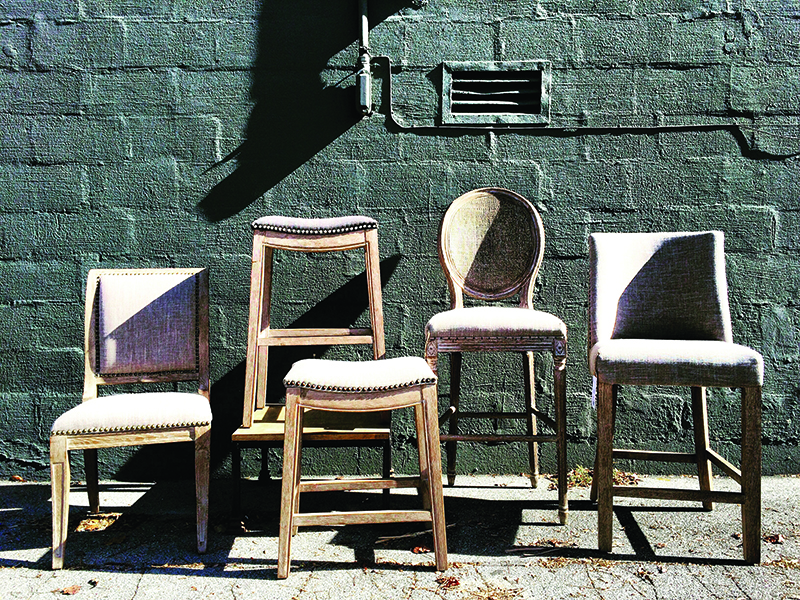
What he did not have was a receiving area or loading dock. “Everything was handed off the trucks. We had a tiny warehouse that we had to pull everything out of into the parking lot to open the boxes, and if it was raining, we had to pull them into the showroom to unbox. I was renting out booths to vendors and while that helped with overhead, I didn’t have much room. I figured if I could floor more stuff, it would be a big game changer for us.”
He pled his case to the former gym’s landlord, Jim Lunceford, a native of Berry, AL, founder of Express Oil Change. “He was probably 80 years old when I went to him with my business plan, and he said, ‘This is not a business plan, but I like you, and I’m going to take a chance on you.’ So, he added 12,000 square feet to the building, and we doubled in size.”
Filling the space with new product wasn’t quite as easy. “I knew I wanted to bring in new furniture and kind of curate the offering, but nobody would sell to me. I placed some orders with a few companies — I won’t name them — but they wouldn’t even complete the order, and just dismissed me. Coaster was actually the first company that sold me furniture. Back then it was a $750 minimum opening order; I think I came up with $752 on my first one, probably $300 of which was in stock. So, I got my first pallet of Coaster Furniture, and I’m sure it was a Louis Philippe dresser, sold it, bought another $1,000, sold it, bought $1,200. I had no idea how to mark it up, so if a dresser came in for $130, I probably sold it for $199 or something like that. Looking back on it, I was oblivious. I had no idea what I know now, so I had to reinvent the wheel. And there were things that were working. We were still doing consignment at that point, and you can’t imagine how many gallons of chalk paint we’d gone through selling painted antique furniture with good margins.”
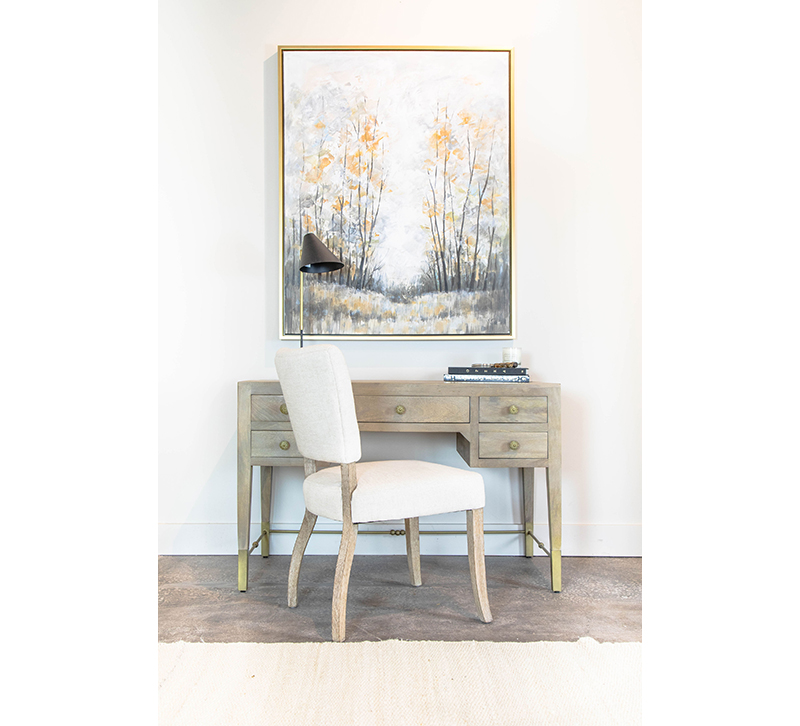
Rockford: Achieving Flow
Like many others, Stock & Trade had prepared for a good year in 2020, with plenty in the pipeline. In fact, when the pandemic hit a year ago, the company had so much product on order with its new stores set to open, Michael Carey was extremely nervous. “It was way more than we’d ever sold,” he says.
Still, Rebekah Osborne, Executive Director of Rockford Wholesale, a key manufacturing partner, was confident. “She’s the spreadsheet queen and had shown me the numbers. We just didn’t know when we were forecasting in 2019 that the demand would go crazy.”
Those shopping High Point Market this month can find out more about Osborne and Rockford Wholesale by visiting the showroom on 156 S. Main. There, marketgoers will encounter a number of the lines featured (and tested!) on Stock & Trade’s floors, including Atelier Home, an upscale, though competitively priced eight-way, hand-tied upholstery brand; bedroom line Beyond Borders; case goods and accents by Old South, and BedTech mattresses.
Essentially, Rockford Wholesale is a one-stop, to-the-trade resource for retailers and designers owned by Carey with a wide range of offerings that can all ship together from a warehouse located in Rockford, AL, managed by Osborne. Herself, a former retailer who was sourcing product overseas in India and Indonesia for her own store in Lake Charles, LA, Osborne was continually approached by other retailers who wanted to wholesale her products. That was the beginning of Beyond Borders and eventually she opened a showroom at the Tupelo Market. That’s where Carey first encountered her product. It was the first time he ordered containers for Stock & Trade. “It was all solid wood, mahogany and teak, and I loved her stuff. They stuck out like a sore thumb in Tupelo and the showroom was so busy, I think I even had to come back that first time, and I actually met with her Mom.”
Eventually, Carey learned that she was operating from a small, 10,000-square-foot warehouse in Welsh, LA, population 3,000. “It didn’t actually have a dock,” Osborne says. “It was an old antique store, not built as a distribution center by any means. He called me one day, and we talked about what my building was like, and how limited I was there, and he had an idea to partner together to do distribution for several brands.”
“I still couldn’t afford to buy a bunch of containers, and I thought, if she puts her containers in my warehouse, I can buy products as I need them, and keep the flow going. I saw how organized and meticulous she was, and she actually had a real business plan. I said, “Why don’t we pool resources? I knew of a huge textile mill out in the middle of Alabama that had been sitting empty for years.”
Today, that building ensures a steady flow of goods to retailers and designers, and for those who may be wondering, no preference is shown to Stock & Trade. “I have someone who does purchase orders specifically for Rockford, and they get in line like everybody else,” Carey relates. “There have been many times when there’s something sitting in the warehouse that I could sell many times over in my stores, but it belongs to somebody else, and Rebekah does a really good job of keeping the two separate and running Rockford’s day-to-day operations.”
“But what’s nice,” Osborne says, “is that we do bring product in just for Stock & Trade to try out and see what kind of feedback we get, and then based on that, we can tweak it before we mass produce.”
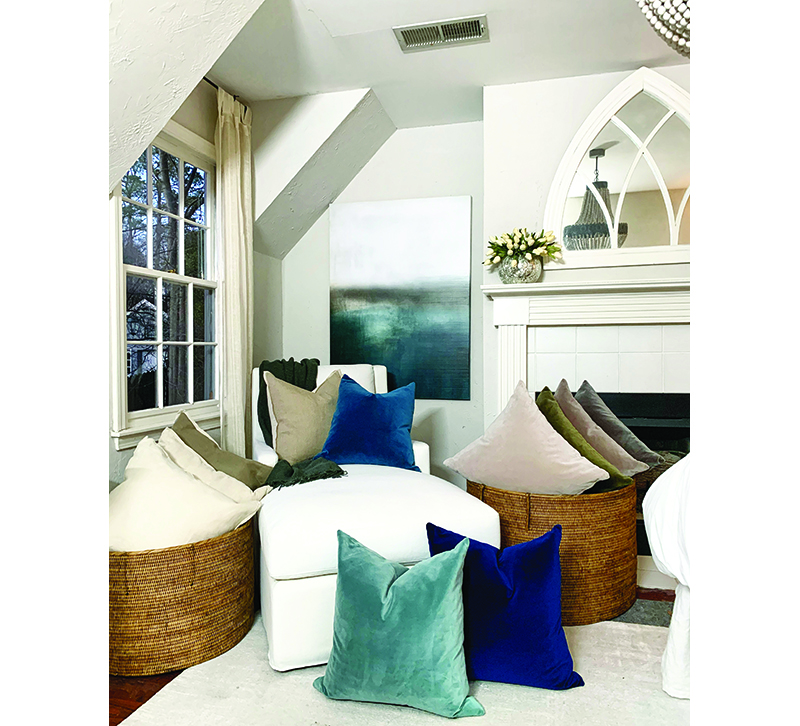
A New Concept Takes Shape
Not surprisingly, he realized new furniture that didn’t require painting was easier, and he could turn it faster. And, he wanted to try another concept, focusing on the kinds of better-end looks he encountered while renovating properties. Incidentally, he never picked up shelter magazines, or read industry trades or had the free time necessary to watch HGTV. “I wasn’t really worried about what everybody else was doing.” Indeed, he has never actually set foot in a competitor’s store. “I just never saw the benefit in copying anybody. I just focused on what worked for us.”
He opened another, much smaller store concept in an empty Quizno’s in the little city of Homewood, adjacent to one of the wealthiest communities in the state. While his real estate instincts were good, the store itself “was pretty much a failure,” he relates, “because we spent all of our time getting people in the store, and they could see the whole store at the front door. And, if they wanted to buy something, it left a hole on the floor because I didn’t have any backstock. I didn’t have the money for that.”
He realized quickly that he needed more space to be able to show more product, and approached the owner of a long-defunct, three-story piano store with his ideas. Again, he heard, “This is not a business plan,” but was able to convince the owner to let him take over the building. “At the time, I didn’t realize it had carpet and vinyl floor and acoustic ceilings and everything that we would have to scrape off and open up, but I was just going to take it down to the bare bones.”
In the meantime, he still needed someone to keep the Homewood store running. He reached out to a friend named Barbara Williams who worked for a real estate company. “She looked at me and said, ‘This is not a business plan,’ but she knew of someone who had recently left a job at Restoration Hardware. I contacted him and said, “I’m opening a store, like tomorrow. Would you be interested in talking about working there? We made it a working interview, during which he helped us stage the whole 700 square feet. His name is Christopher Rankin, and he still works for me today as Vice President of Design.”
In the beginning, while Rankin was happy because he could largely do his thing creatively, free of a strict specialty store corporate structure, the two would butt heads over the business model. Mainly, because Rankin’s previous “corporate structure” considered selling furniture directly off the floor something akin to retail heresy. “He wanted to keep the showroom meticulous and perfect, and we had many battles, because remember, at Encore, my floor was changing all the time and I would hear people saying, 'I love that whenever I come in here it’s always different.’ ”
At the same time, Carey could sense that immediate gratification was becoming more and more important to consumers. “We tried not selling off the floor for about a year, and it was definitely a failure. I knew if I kept on that path, it was going to bury me. Rankin pushed back at first, but as soon as we started selling off the floor and constantly changing the floor up, we started seeing more traffic. We weren’t breaking any records yet, but we were seeing steady growth.”
When the aforementioned piano store was finally ready to open, Carey approached a marketing company. “It was probably the first money I ever spent on professional services. I think it was $5,000, which was probably a good deal, but it still made me sick to think they really just sat around a table and came up with a name, that at the time, I couldn’t wrap my head around — Stock & Trade Design Company — because we didn’t have any stock to speak of and we didn’t do any trading. They said, ‘Well, Restoration Hardware doesn’t sell hardware; Crate & Barrel doesn’t sell crates and barrels, and Pottery Barn doesn’t sell barns.”
Eventually, Carey and the marketing firm would part ways, but the name stuck and would be added to storefronts as far away as Tennessee and Florida. With a talent for hunting down ideal store locations and identifying voids (there are still no high-paid real estate consultants here, only Carey’s tenacious focus on the marketplace), growth has been steady.



